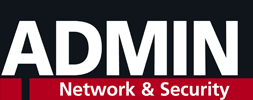« Previous 1 2 3 Next »
Zulip, Mattermost, and Rocket.Chat
Close to the Chest
Spurred on by the huge success of tools such as WhatsApp and Telegram, increasing numbers of business users are now showing an interest in chat services as an alternative to email for internal company communication. Tools, bots, and plugins that integrate other applications directly into the chat forums are also useful. Office staff can discuss current business cases with coworkers in the team chat while a bot from the ticket system feeds information on currently open tickets and processing status.
Slack is currently one of the most popular chat services for businesses, partly because it integrates with more or less any commercially available business application and tool. However, as with all cloud applications, you must be careful: Confidential company communications end up somewhere in the Amazon cloud. Business users can choose the region in which they want to store their data and even which (other) country will store a backup, but basic organizational data and user profiles still end up on third-party servers.
Of course, you already know what's coming next at this point. If you love the convenience and functionality of tools like Slack but don't want to (or aren't allowed to) entrust your data to a cloud or a third party, you can always turn to self-hosted open source programs. In this article, I take a close look at the complicated setup and operation of the popular open source options Zulip [1], Mattermost [2], and Rocket.Chat [3] and discover how well these platforms integrate with other applications.
Functions and Features
A number of questions should be considered when looking for local chat groupware:
- Do clients exist for all required target platforms (web, desktop, mobile), and do they have push
Buy this article as PDF
(incl. VAT)
Buy ADMIN Magazine
Subscribe to our ADMIN Newsletters
Subscribe to our Linux Newsletters
Find Linux and Open Source Jobs
Most Popular
Support Our Work
ADMIN content is made possible with support from readers like you. Please consider contributing when you've found an article to be beneficial.







